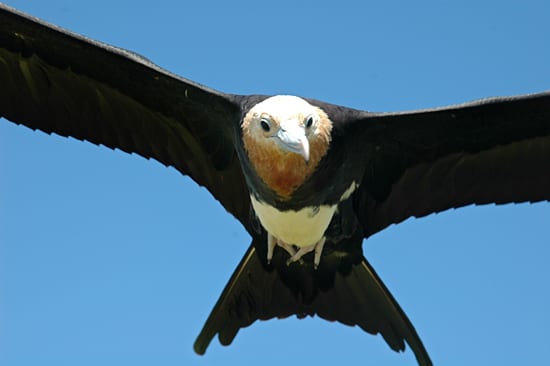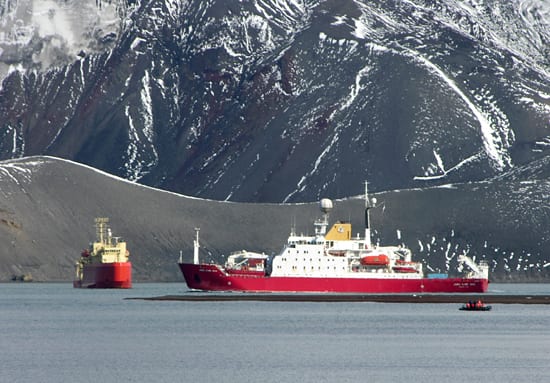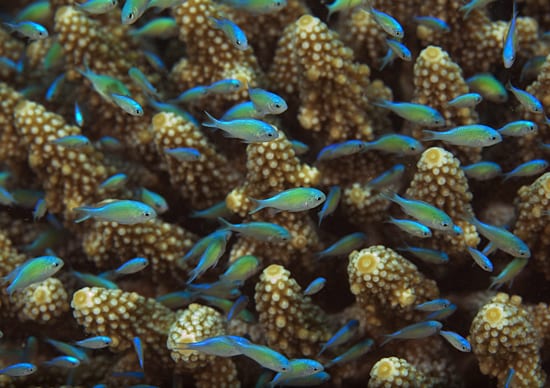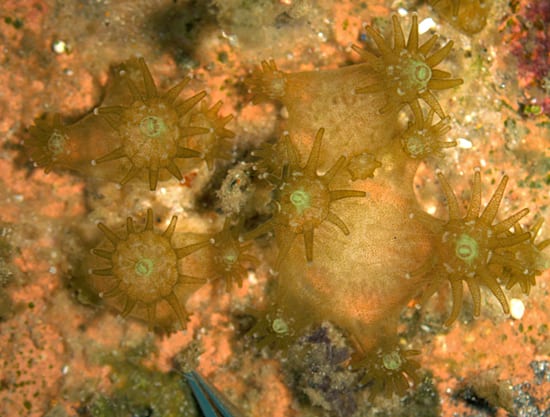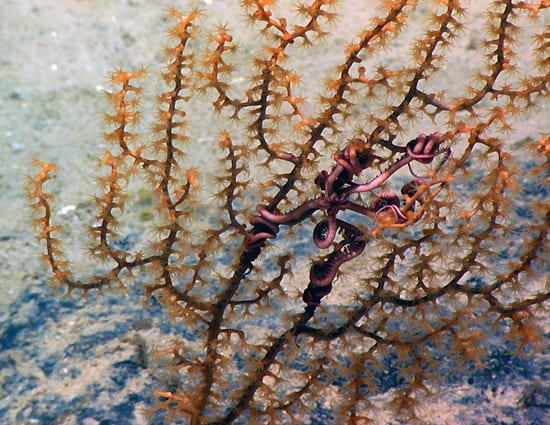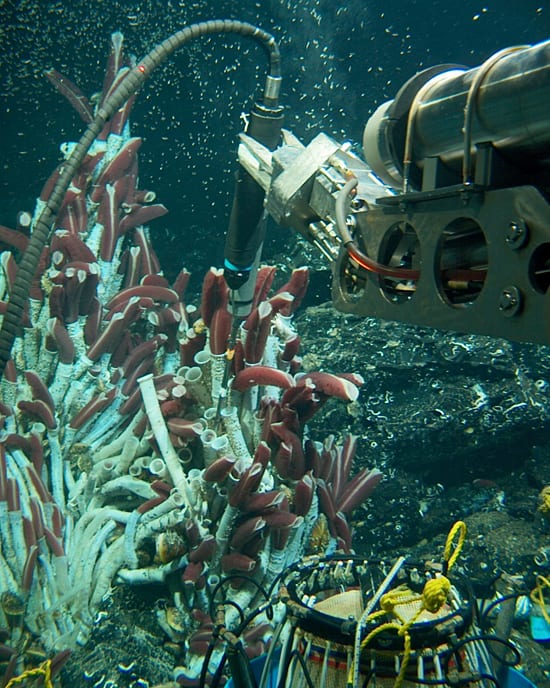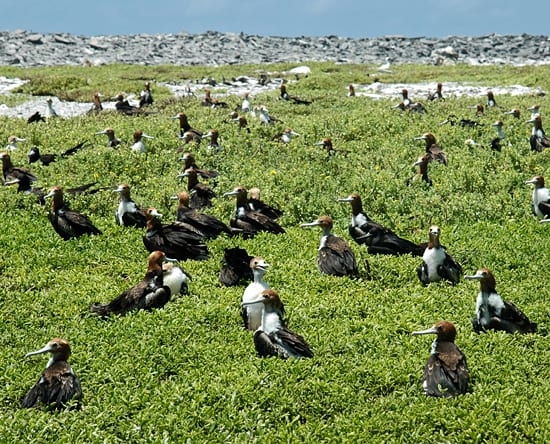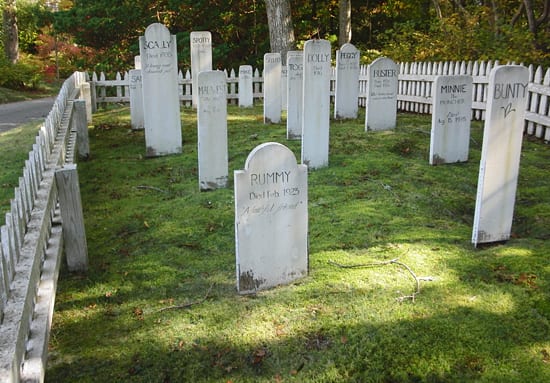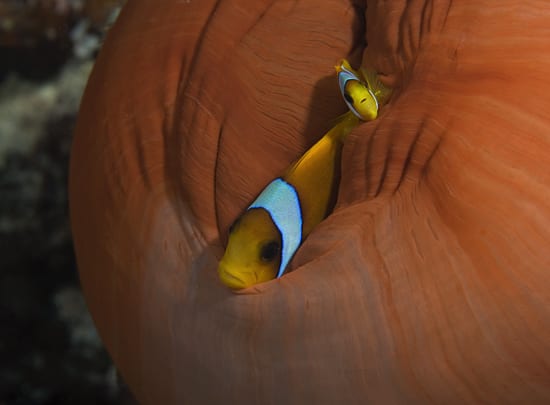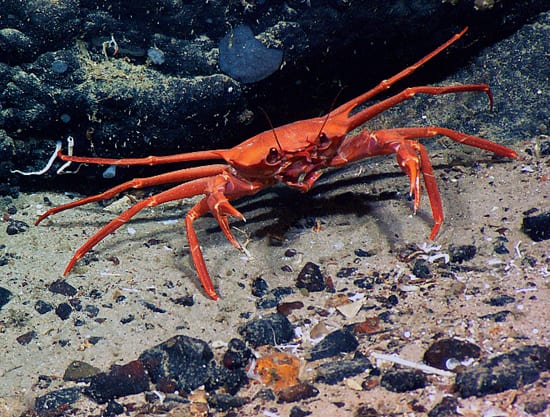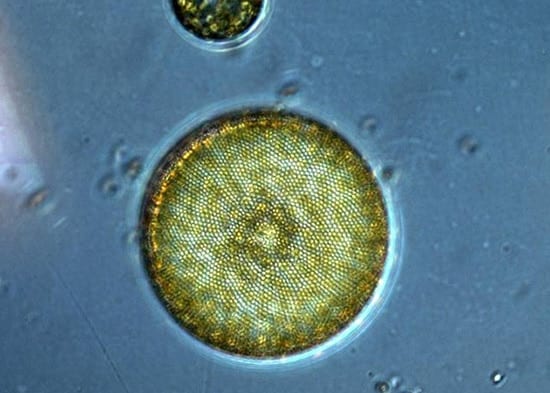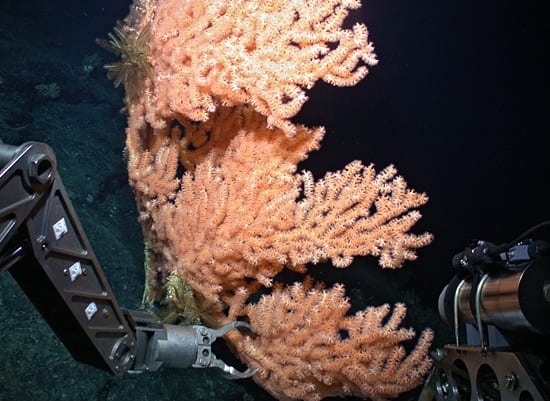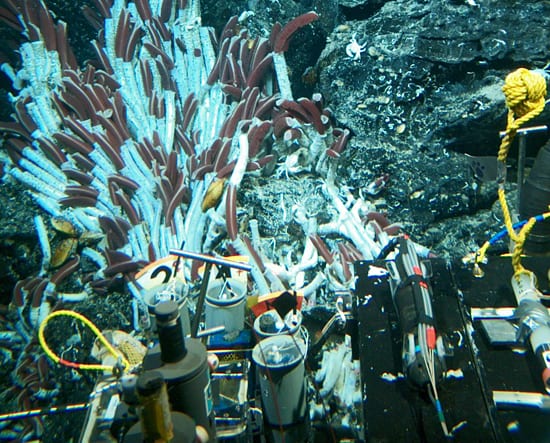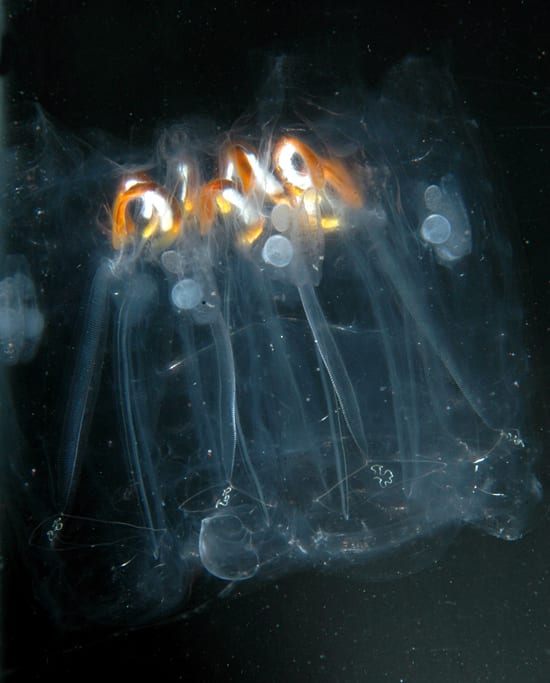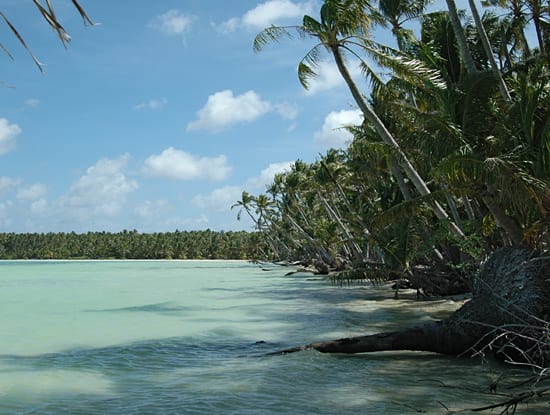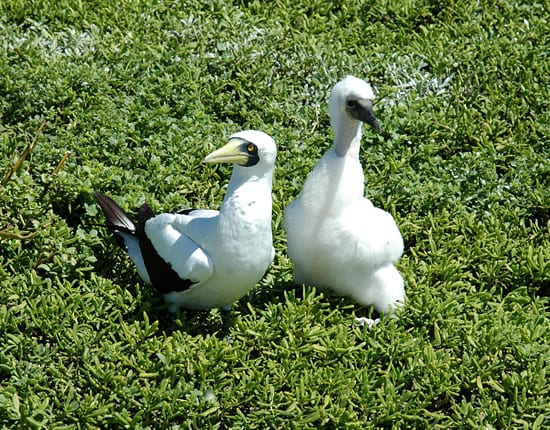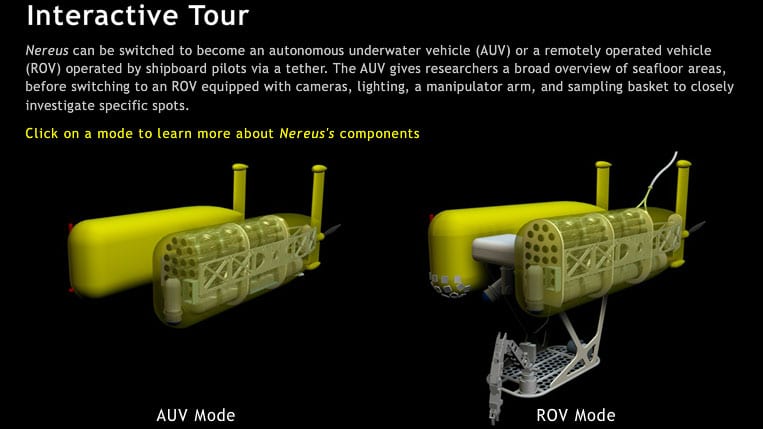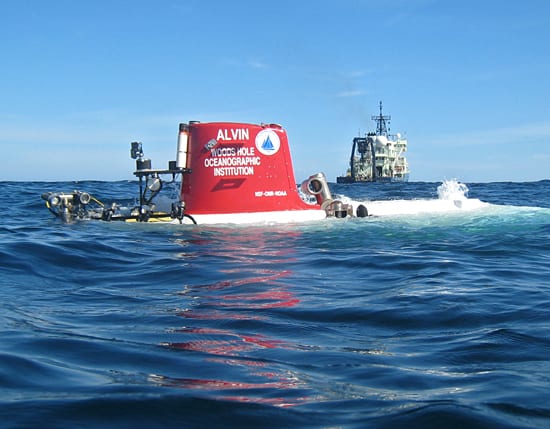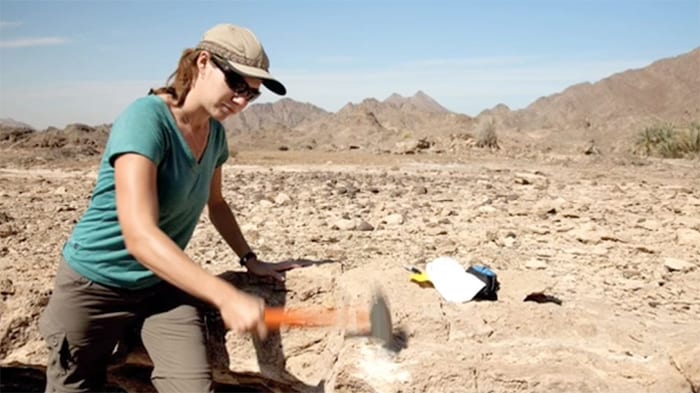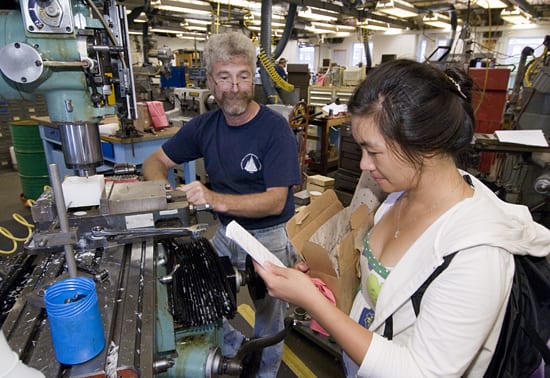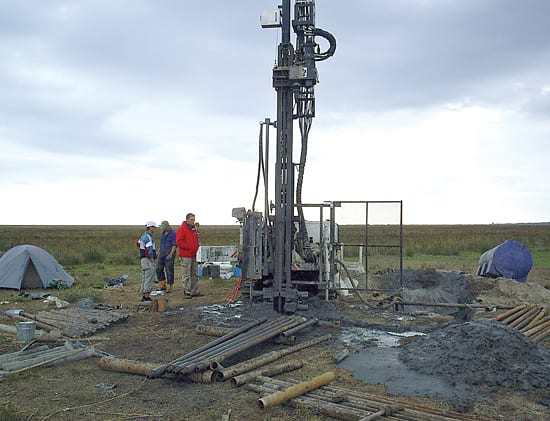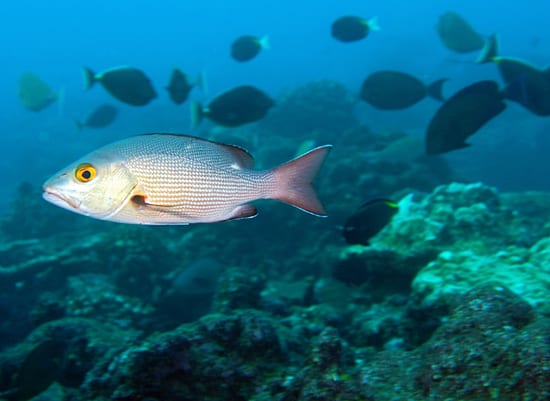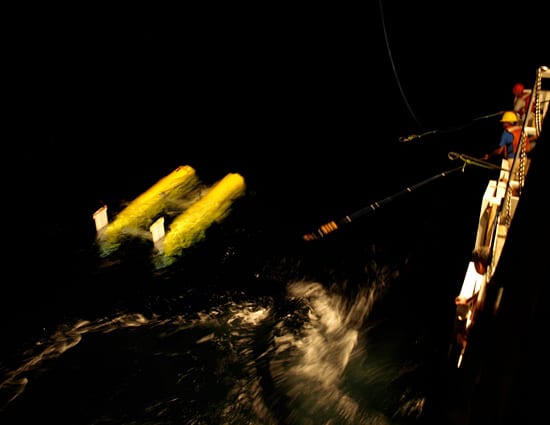Multimedia Items
What are you doing on my island?
McKean Island —one of the reef-fringed islands of the world’s largest marine protected area, the Phoenix Islands Protected Area — harbors large nesting populations of lesser frigate bird (Fregata ariel).…
Read MoreDive in
Dive and Discover‘s Expedition 10 explored one of the coldest, most remote places on our planet — the Southern Ocean surrounding Antarctica. In March 2006, a team of researchers aboard…
Read MoreWave of blue and green
A school of colorful, bluegreen chromis (Chromis viridis) seek shelter in a coral colony in the Farasan Banks. An international team of scientists, including WHOI biologist Simon Thorrold, conducted a…
Read MoreEarly machining
In this 1946 photograph, five men work in the WHOI machine shop that was set up on the ground floor of the Bigelow Laboratory in 1940. Ralph Bodman is behind…
Read MoreMustard coral
Young polyps of the mustard coral, Porites astreoides, extend their tentacles during feeding time at the Bermuda Institute of Ocean Sciences (BIOS). These 12-week old spat, reared from birth in…
Read MoreHome sweet home
Seamounts support a vast variety of cold water coral communities. These deep-sea corals themselves host more than 1,300 different species of animals. Some animals are often unique to their seamount…
Read MoreWithin arms reach
A pilot on board the Human Occupied Vehicle Alvin uses one of the vehicles two hydraulically-powered robotic arms to probe tube worms on the sea floor of the East Pacific…
Read MoreHaven for seabirds
The small coral islands of the remote Phoenix Islands are important resting and nesting areas for millions of seabirds, some of them rare and endangered. Over time, seafaring Polynesians, explorers,…
Read MorePet cemetery
This isn’t an elaborate Halloween decoration or the set of a Stephen King movie. The pet cemetery — a permanent fixture on the WHOI Quissett campus — is the final…
Read MoreBoo!
A pair of Red Sea anemonefish (Amphiprion bicinctus) take shelter in a pumpkin-colored sea anemone. An international team of scientists conducted a rapid, ecological survey of corals and coral reef…
Read MoreA decidedly defensive stance
Seamounts are underwater mountains found throughout the global ocean. Many seamounts are extinct volcanoes that once erupted from seafloor vents, with lava flows building thousands of meters up from the…
Read MoreExploring an Icy, Invisible Realm in Antarctica
They may be microscopic in size, but plankton play a starring role in the oceans’ food web and the Earth’s climate. Scientists are just beginning to reveal the rich diversity…
Read MoreCold water corals
Scientists collected thousands of samples of cold-water corals living on the seafloor during three expeditions between 2003 and 2005 to the New England Seamounts, a chain of extinct underwater volcanoes,…
Read MoreSix foot worms!
This picture of tubeworms was taken in the East Pacific Rise at a depth of 8,200 feet (2,500 meters) by the Human Occupied Vehicle Alvin. Since the discovery of hydrothermal…
Read MoreJelly Ring
A colony of 12 salps drifts through the distant tropical waters of the Phoenix Islands. The salps are transparent tubular animals arranged around a center, like segments in an orange.…
Read MoreTropical Isle
Eight atolls in the Pacific represent the world’s largest marine protected area — the Phoenix Islands Protected Area. Atolls are low ring-shaped islands of coral rubble that form over millennia…
Read MoreTaller than mom
McKean Island, a low, treeless outcrop of coral sand in the equatorial Pacific Ocean, is home to many thousands of seabirds. Though once mined for bird guano, the island was…
Read MoreInteractive Nereus
Oceanographic workhorse
The submersible Alvin prepares for a dive in September 2009. Built in 1964, the hardworking sub helped turn a sunless, freezing marine world into a new frontier. More than 4,000…
Read MoreTurning Carbon Dioxide Gas into Rock
By Ari Daniel :: Originally published online October 22, 2009
Read MoreExpanding exploration
Summer Student Fellow Stephanie Chin, of Massachusetts Institute of Technology, works with WHOI senior machinist Jim Brown to fabricate components for her summer project —a biologic pump sampler prototype for…
Read MoreDrilling for clues
In 2007, WHOI geologist Liviu Giosan and his colleagues drilled a 42-meter-deep core through sediments that have piled up since the early Danube delta began forming. The team used cores…
Read MoreJust passin’ through?
Larry Madin, director of research at the Woods Hole Oceanographic Institution (WHOI) and also a marine biologist and diver, snapped this image while surveying undersea life on a September 2009…
Read MoreNight fishing
Under the cover of darkness, the deck crew aboard the R/V Cape Hatteras work to secure the robotic vehicle Nereus and crane it back aboard the ship. A team of…
Read More
